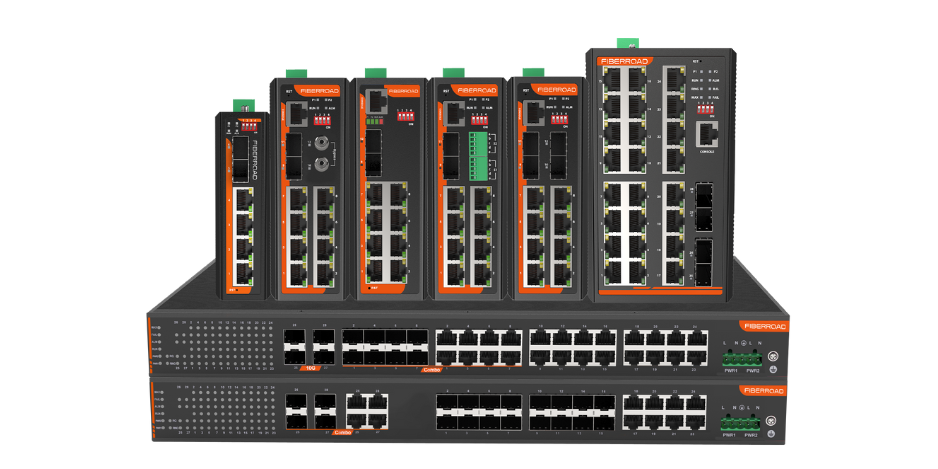Industrial Switches: The Backbone of Industrial Automation and IIoT
Industrial switches are the backbone of industrial automation and IoT. They may seem like small components, but they play a massive role in ensuring that factories and manufacturing plants run smoothly. These switches come in various shapes and sizes, from simple push-button switches to complex programmable logic controllers. Their primary function is to control the flow of electricity to machines and equipment, allowing for seamless operation without any hiccups or delays in production. Without these reliable devices, we would see chaos on factory floors with frequent malfunctions and breakdowns that could result in costly downtime or even worse safety hazards. Industrial switches have also become even more critical with the rise of IoT technology as they act as gateways between machines and networked systems, enabling real-time data analysis for predictive maintenance or quality control purposes. The power of industrial switch cannot be underestimated; it’s time we give them the recognition they deserve!
Choosing the Right Industrial Switch For Your Network

The unmanaged Industrial Ethernet Switch is designed for small and medium industrial network applications. It provides an easy way to access Gigabit Ethernet. The robust design makes it ideal for deployment in industrial and outdoor surveillance settings.

Industrial PoE Switch is designed for small and medium industrial network applications. This switch’s robust design makes it ideal for deployment in industrial and outdoor surveillance settings. It can optionally support DIN-Rail mounting or Wall mounting.

L2+ Industrial Managed Ethernet Switch is a multi-port switch. It provides stable and reliable Ethernet transmission with high-quality design and reliability. The product adopts industry-leading standards, which provide customers with more ethernet functionalities.

10G Industrial Ethernet Switch is a Layer 3 managed industrial Ethernet switch which is independently developed by Fiberroad for industrial ethernet applications. The device features Gigabit Ethernet ports and 1.25/2.5G/10G SFP Ports, supports Layer 3 routing.
FEATURES
How to Improve Efficiency and Productivity with Industrial Switches
Mechanical Environment
Industrial switches can better adapt to harsh mechanical environments, including vibration, shock, corrosion, dust, and water.
Climate
Industrial Switches are better suited to poorer climates, including temperature and humidity.
Power Supply Design
Regular switches are basically single-supply, while industrial switch power supplies are generally dual-power backups.
Installation Method
Industrial Ethernet switches can be installed in DIN rails and racks. Commercial switches are generally rack and desktop.
Cooling Method
Industrial Ethernet switches generally use a fanless enclosure for heat dissipation, while commercial switches are fan-distributed.
Components
Industrial Ethernet switch components have higher requirements for selection and should be better adapted to the needs of industrial production sites.
Operating Voltage
Industrial Switches have a wide operating voltage range, and commercial switches require higher voltages.
Electromagnetic Environment
Industrial Ethernet switches have strong anti-electromagnetic interference capabilities.
SOLUTION
Revolutionizing Your Operations: How an Industrial Switch Improve Your Bottom Line
Are you ready to take your operations to the next level? Look no further than an industrial switch solution. With its advanced technology and unmatched efficiency, the industrial switch is a game-changer for businesses looking to improve their bottom line. Say goodbye to slow data transfer speeds and unreliable connections – the industrial switch ensures lightning-fast communication between devices, saving you time and money. Plus, its rugged design means it can handle even the toughest environments, making it a versatile choice for any industry. Don’t settle for outdated equipment that puts your business at risk of downtime or costly repairs. Revolutionize your operations with an industrial switch solution today!
Ready to Outfit Your Network with Industrial-Grade Switch?
Fiberroad is your one-stop shop for industrial switches. We offer reliable industrial switches that are compatible with all industry standards and selected on the basis of performance, safety and environmental considerations.
Industrial Switch FAQs
The main difference between an industrial ethernet switch and a regular ethernet switch is that an industrial ethernet switch is designed to work in harsh environments. They can operate in a wide operating temperature range, have higher shock and vibration resistance, and are often sealed against dust and water. This makes them ideal for use in factories, mines, oil rigs, and other places where the conditions are tough.
Choosing an Industrial PoE Switch requires a few considerations. You should consider the type of PoE switch you need, the number of ports you need, the bandwidth capabilities, and any other special features you may require. Additionally, make sure to check the environmental specifications to ensure your switch will operate in your desired environment. Finally, verify the warranty and service offerings to ensure you have peace of mind when investing in your Industrial PoE Switch.
Choosing between a managed and unmanaged industrial network switch can be a daunting task. There are several things to consider when making this decision such as the size of your network, the number of users, the type of traffic, and your budget. Each organization has different requirements, so there is no one-size-fits-all answer. However, here are some general guidelines to help you make the best decision for your needs. If you have a large network with hundreds or thousands of users, then a managed switch is likely your best option.
Managed switches allow for greater control and visibility into your network traffic. You can set up Quality of Service (QoS) rules to prioritize certain types of traffic, such as voice or video. You can also create virtual LANs (VLANs) to segment your network and improve security. If you have a small network with only a few users, then an unmanaged switch may be sufficient.
Unmanaged switches are easier to set up and typically don’t require as much maintenance. However, you won’t have as much control over your network traffic or be able to take advantage of features like QoS or VLANs. Ultimately, the decision comes down to your specific needs and requirements. If you need more control over your network traffic or want to utilize advanced features like QoS or VLANs, then a managed switch is the way to go.

















